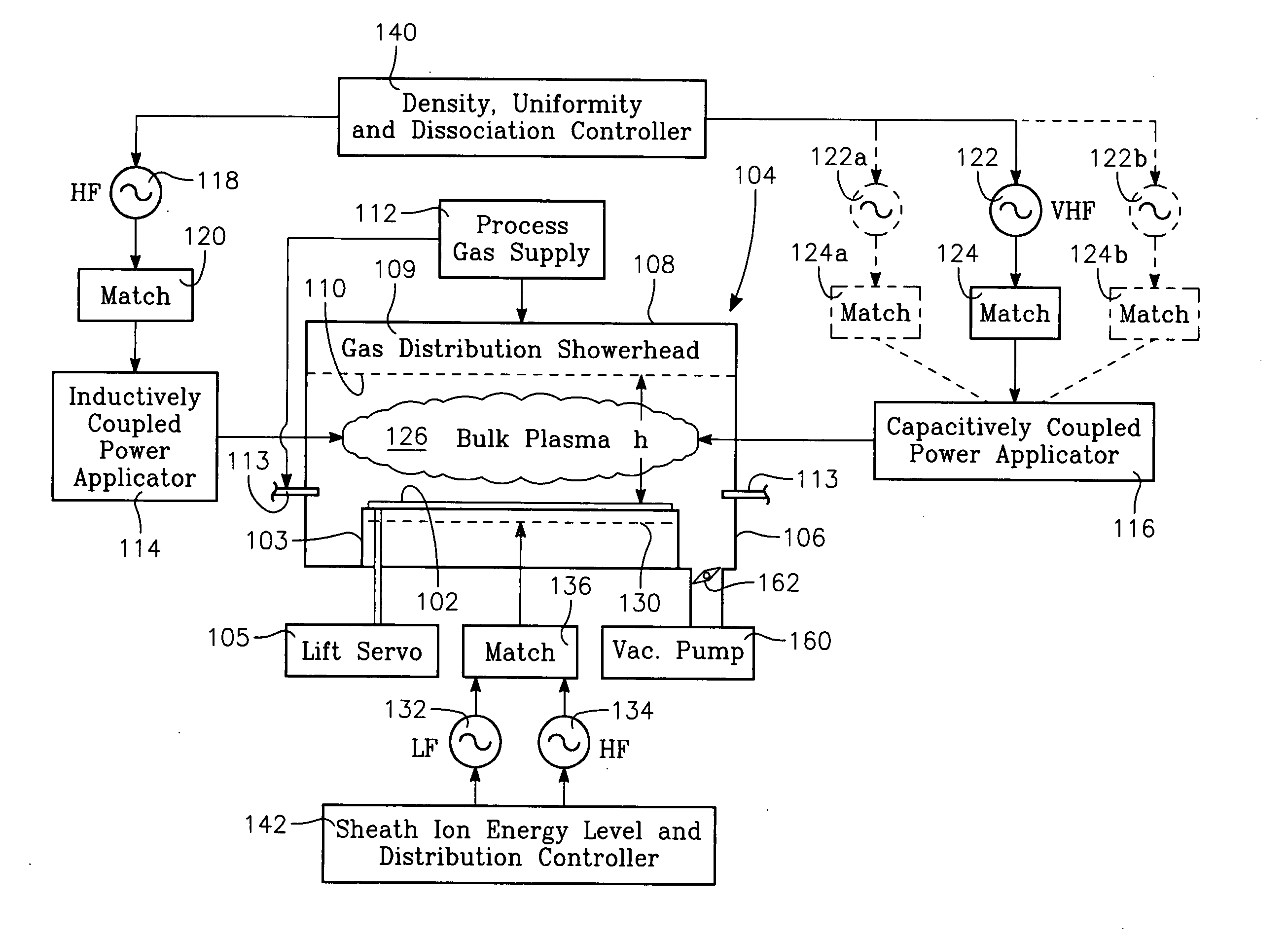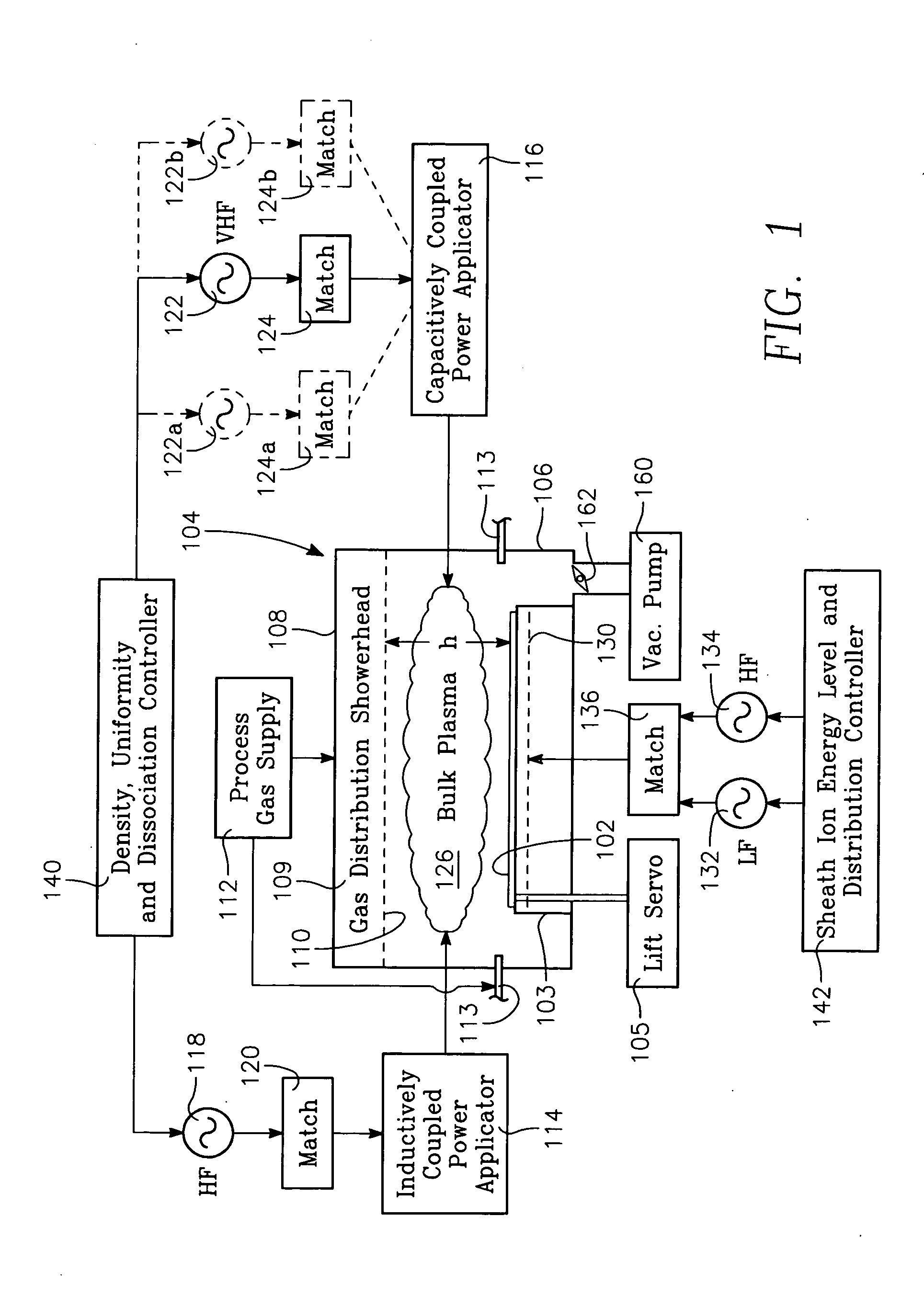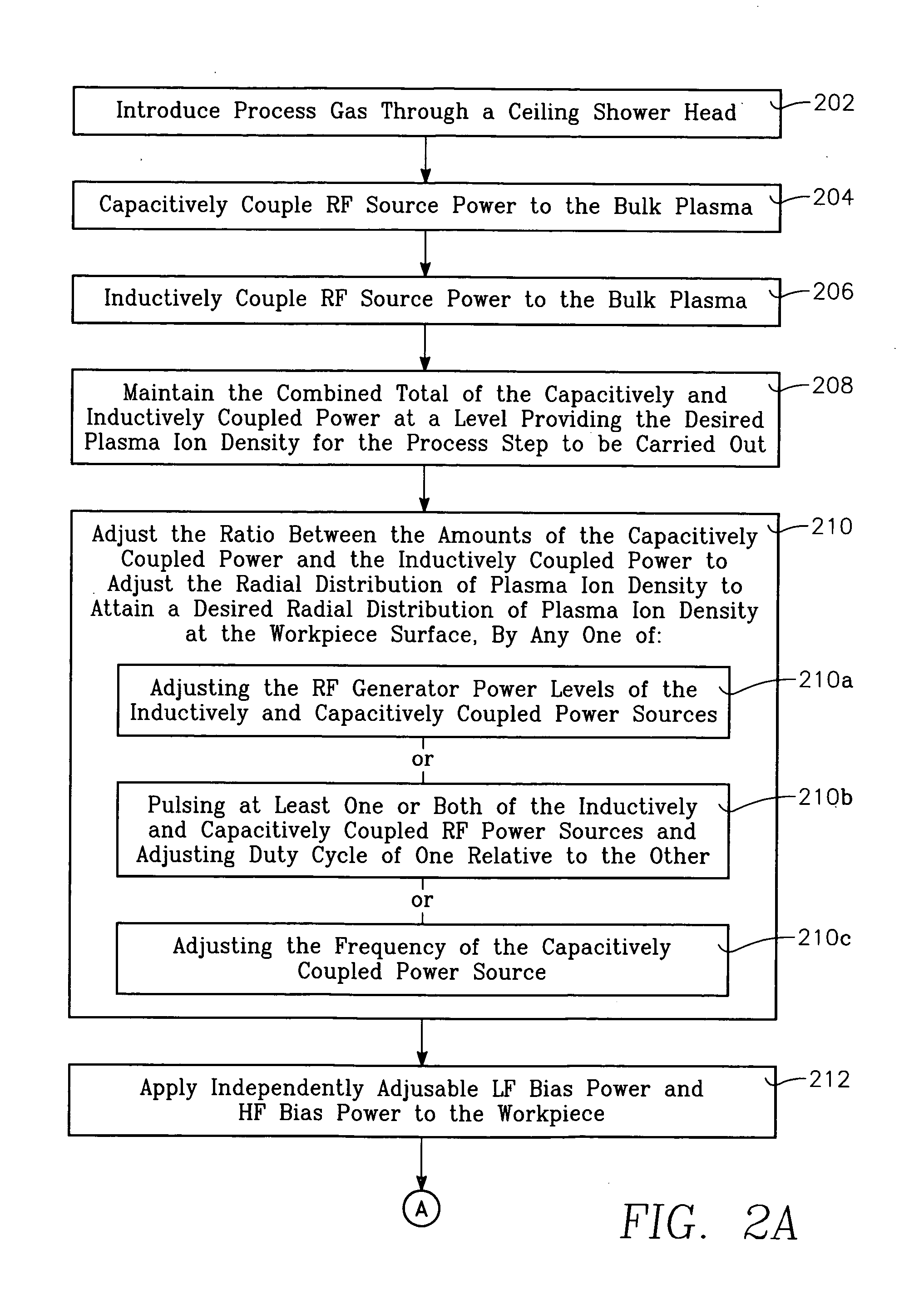Process using combined capacitively and inductively coupled plasma process for controlling plasma ion dissociation
- Summary
- Abstract
- Description
- Claims
- Application Information
AI Technical Summary
Benefits of technology
Problems solved by technology
Method used
Image
Examples
Embodiment Construction
[0026]FIG. 1 depicts a plasma reactor for processing a workpiece 102, which may be a semiconductor wafer, held on a workpiece support 103, which may (optionally) be raised and lowered by a lift servo 105. The reactor consists of a chamber 104 bounded by a chamber sidewall 106 and a ceiling 108. The ceiling 108 may comprise a gas distribution showerhead 109 having small gas injection orifices 110 in its interior surface, the showerhead 109 receiving process gas from a process gas supply 112. In addition, process gas may be introduced through gas injection nozzles 113. The reactor includes both an inductively coupled RF plasma source power applicator 114 and a capacitively coupled RF plasma source power applicator 116. The inductively coupled RF plasma source power applicator 114 may be an inductive antenna or coil overlying the ceiling 108. In order to permit inductive coupling into the chamber 104, the gas distribution showerhead 109 may be formed of a dielectric material such as a ...
PUM
| Property | Measurement | Unit |
|---|---|---|
| Power | aaaaa | aaaaa |
| Density | aaaaa | aaaaa |
| Ratio | aaaaa | aaaaa |
Abstract
Description
Claims
Application Information
 Login to View More
Login to View More - R&D
- Intellectual Property
- Life Sciences
- Materials
- Tech Scout
- Unparalleled Data Quality
- Higher Quality Content
- 60% Fewer Hallucinations
Browse by: Latest US Patents, China's latest patents, Technical Efficacy Thesaurus, Application Domain, Technology Topic, Popular Technical Reports.
© 2025 PatSnap. All rights reserved.Legal|Privacy policy|Modern Slavery Act Transparency Statement|Sitemap|About US| Contact US: help@patsnap.com



